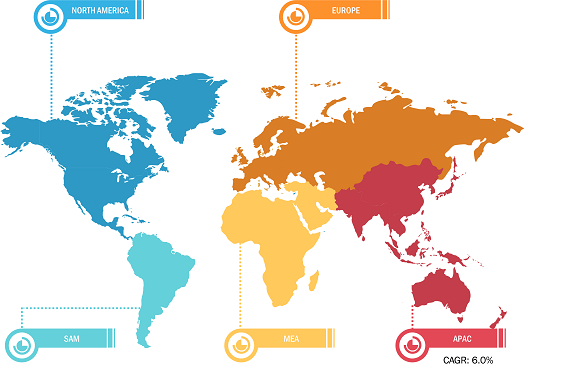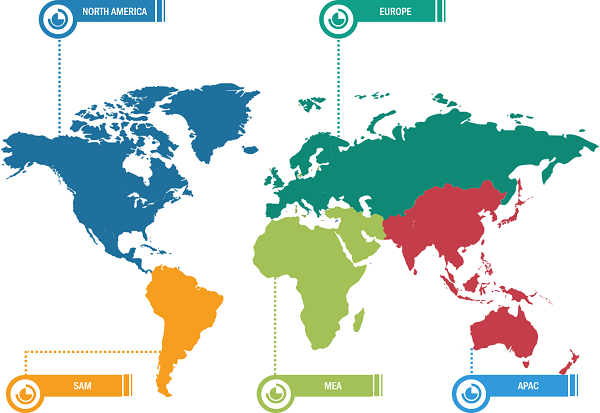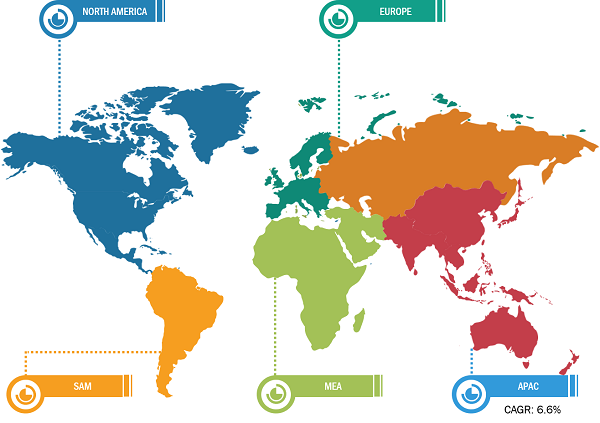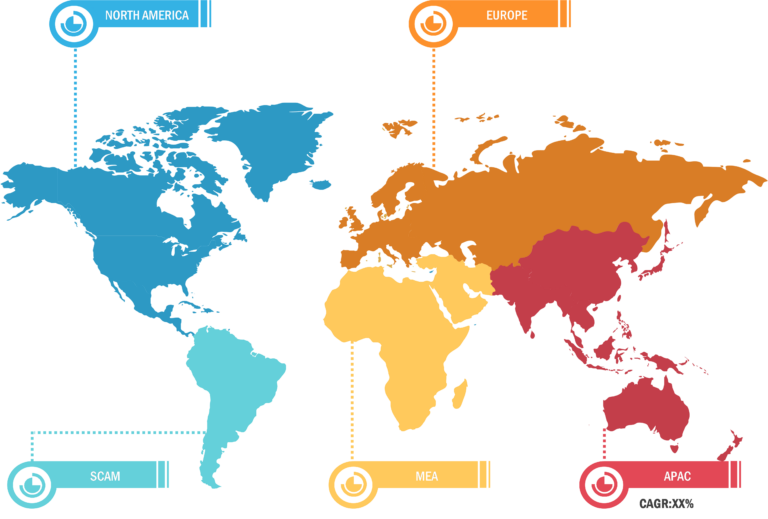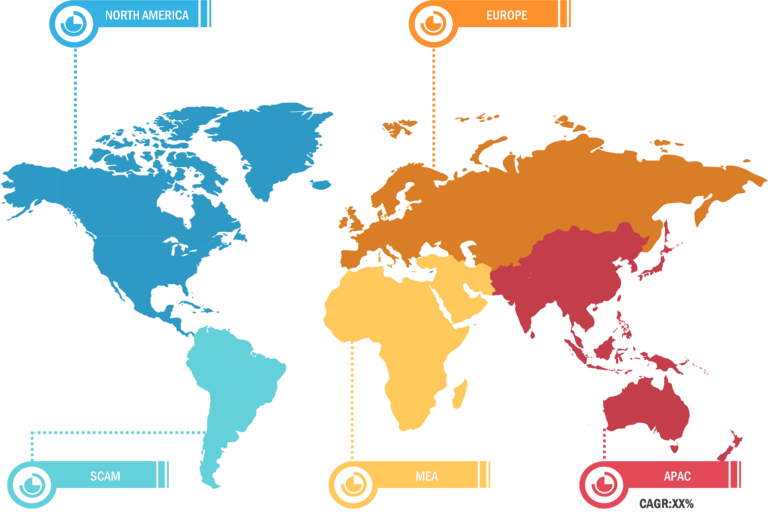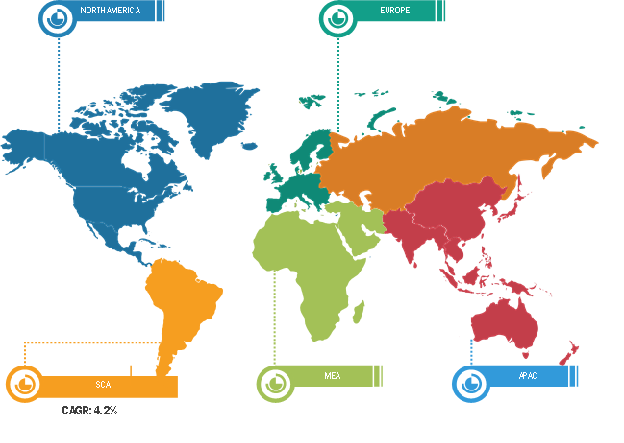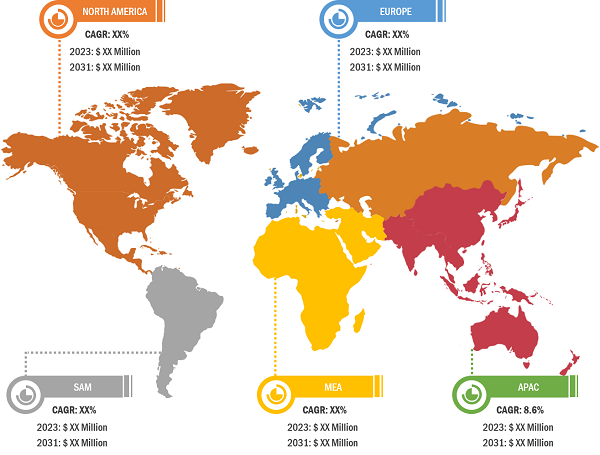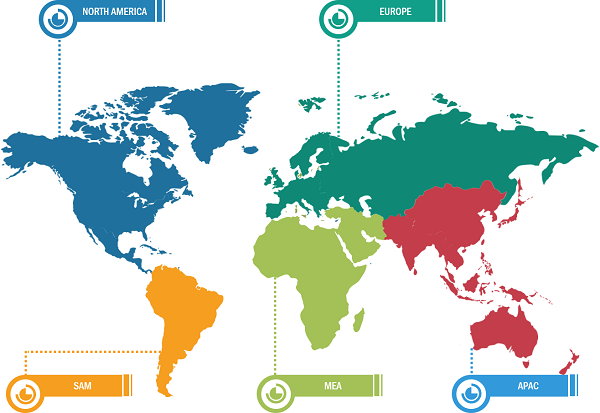
Roofing Market
According to the Associated General Contractors of America (AGC), the construction industry in the US has more than 745,000 employers with over 7.6 million employees and creates nearly US$ 1.4 trillion worth of structures each year. The government spending through the National Housing Strategy (NHS) to encourage energy-efficient construction creates an additional demand for residential projects in the US. The government announced the funding of more than US$ 82 billion for the NHS from 2018–2019 to 2028–2029. In India, the Pradhan Mantri Awas Yojana (Urban) Mission was launched in June 2015, intending to provide housing for all in urban areas by 2022. The Smart Cities Mission launched in 2015 aims to develop 100 cities with comprehensive infrastructure, including affordable housing and technology-aided improvements in security and safety. China, during its 14th Five-Year Plan (2021–2025) period, planned to allocate 6.5 million government-subsidized rental homes in 40 key cities to support nearly 13 million people needing affordable housing. Approximately 219,000 old residential communities constructed in urban areas before the end of 2000 would be renovated by 2025 to provide more housing. As modern construction increasingly emphasizes sustainable and high-performance buildings, the role of advanced materials becomes more pronounced. Therefore, various supportive measures by governments across the world for the development of the residential construction industry create a notable demand for modern construction materials, including roofing structures.
The commercial segment is vital to the roofing industry, driven by construction and renovation activities undertaken by businesses and retail spaces. Commercial roofing projects are generally larger in scale and complexity compared to residential projects, often requiring specialized materials and techniques to meet the demand of diverse building types and uses. Roofing materials such as metal roofing and modified bitumen are prevalent in the commercial segment. Each of these materials offers distinct advantages in terms of durability, energy efficiency, and cost, influencing choice based on specific project needs and budget constraints. Single-ply membranes are particularly popular due to their ease of installation, flexibility, and robust performance in various weather conditions. Economic conditions in a country highly influence the demand for commercial roofing materials, as periods of economic growth result in a larger number of maintenance and repair projects. The development of green building standards and energy efficiency regulations has also spurred demand for sustainable roofing solutions. Cool roofs, which reflect more sunlight and absorb less heat, are known for their ability to reduce energy consumption and improve building comfort. The integration of solar panels and green roofs (which incorporate vegetation) is also gaining traction as businesses seek to reduce their environmental footprint and comply with regulatory requirements.

Roofing Market: Segmental Overview
Based on material, the roofing market is segmented into asphalt, metal, clay, concrete, plastic, and others. The metal segment held the largest market share in 2023, and the concrete segment is expected to register the highest CAGR from 2023 to 2031. Asphalt roofing materials, primarily in the form of roof shingles, have been a popular choice for both residential and commercial buildings. These materials are valued for their ability to withstand various weather conditions, including extreme temperatures, wind, and precipitation, making them particularly suitable for regions facing diverse climatic conditions. The manufacturing process of asphalt-based roofing involves the impregnation of fiberglass or organic base mats with asphalt and the application of mineral granules on the surface, which enhance their strength, waterproofing capabilities, and aesthetic appeal. Asphalt roofing shingles provide an economical solution without compromising performance or longevity. Additionally, the ease of installation and repair further contributes to the popularity of these roofing structures among homeowners and contractors. The availability of a wide range of styles, colors, and textures allows for customization, enabling property owners to achieve the desired look and complement the architectural style of their buildings.
Based on type, the roofing market is bifurcated into shingles, tiles, and sheets. In 2023, the tiles segment accounted for the largest market share. Roofing tiles, typically made from clay, concrete, slate, and metal, offer distinct benefits and exhibit the ability to withstand harsh weather conditions, subsequently providing excellent building protection and insulation. Clay and concrete tiles are particularly popular in regions with Mediterranean, Spanish, and Southwestern architectural styles. These tiles impart a classic, timeless look, in addition to their high durability that often makes them last over a century with proper maintenance efforts. They are resistant to fire and provide excellent thermal insulation, which can contribute to energy savings. Concrete tiles, while similar in appearance to clay, are heavier and offer even more outstanding durability. They are also more versatile in terms of design, available in a wide range of colors and styles to suit different architectural needs. Slate tiles represent the premium end of the market and are known for their natural beauty, exceptional durability, and longevity. A slate roof can last for an extended period, making it an excellent long-term investment despite higher initial costs. Slate tiles are environmentally friendly, as they are made from natural stone and can be recycled. The natural stone provides a distinctive, upscale appearance that is highly sought after in luxury and historic properties.
Based on end use, the roofing market is segmented into residential, commercial, industrial, and institutional and others. In 2023, the residential segment held the largest roofing market share. The growth of the residential sector is driven by factors such as population growth and urbanization, coupled with the increasing emphasis on home improvement and aesthetic appeal. Homeowners prioritize roofing materials that offer durability, energy efficiency, and visual appeal, leading to a diverse range of roofing products tailored to meet these demands. This segment encompasses new constructions, renovations, and replacements, reflecting the ongoing need for quality roofing solutions in the housing market. Economic conditions play a significant role in the progress of the housing market; during periods of economic growth, more homes are built, and homeowners are more likely to invest in roof repairs or replacements. Additionally, weather patterns and climate change impact the market as extreme weather events can cause damage that necessitates roofing services. Homeowners’ increasing focus on energy efficiency and sustainability has also spurred demand for eco-friendly and energy-efficient roofing solutions.
Roofing Market: Competitive Landscape
JSW Steel Ltd, Hindalco Industries Ltd, Siam Cement PCL, PT Utomodeck Metal Works, Hangzhou Singer Building Materials Co Ltd, Holcim Ltd, Compagnie de Saint Gobain SA, Owens Corning, Everest Industries Ltd, TAMKO Building Products LLC, GAF Inc, Roofseal (M) Sdn Bhd, Atlas Roofing Corp, Maruhachi Ceramics of America Inc, and Union Galvasteel Corp, are among the key players operating in the global roofing market. Market players focus on providing high-quality products to fulfill customer demand.

